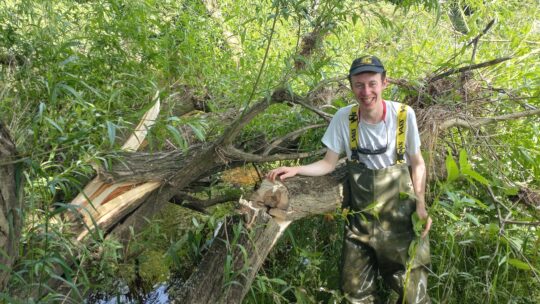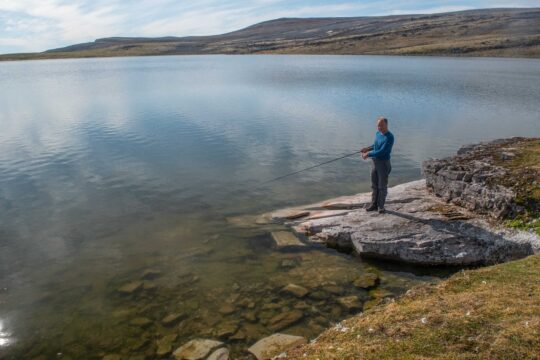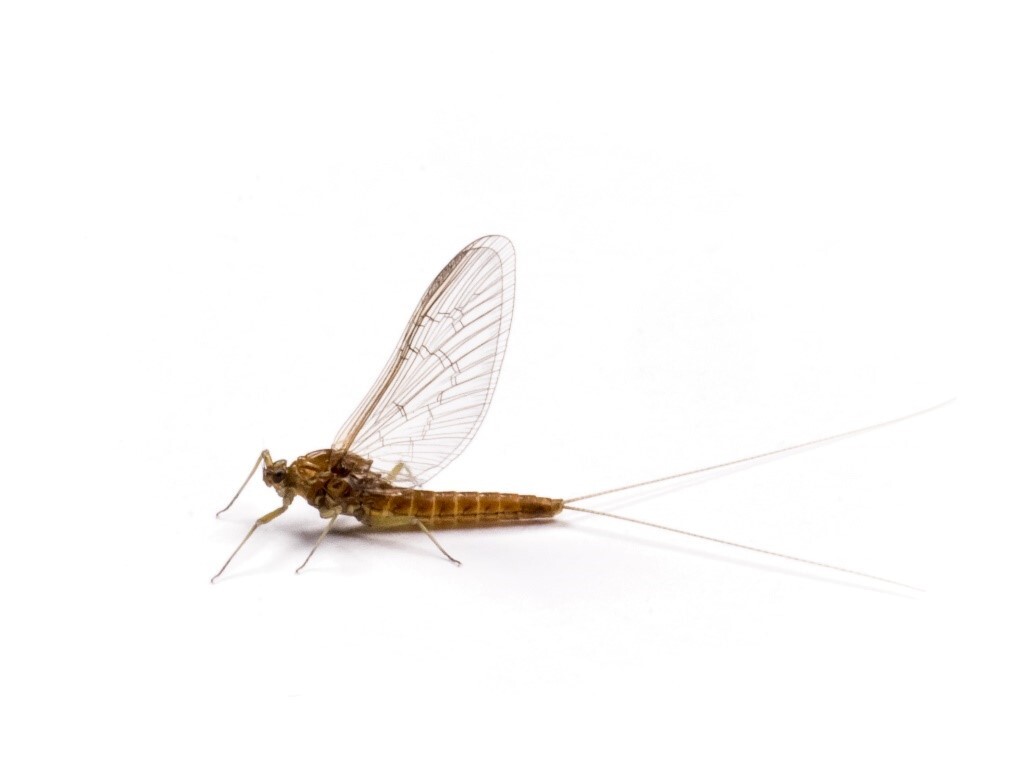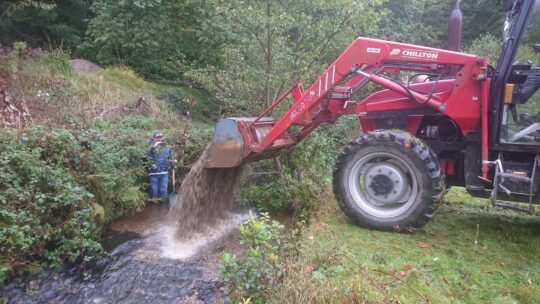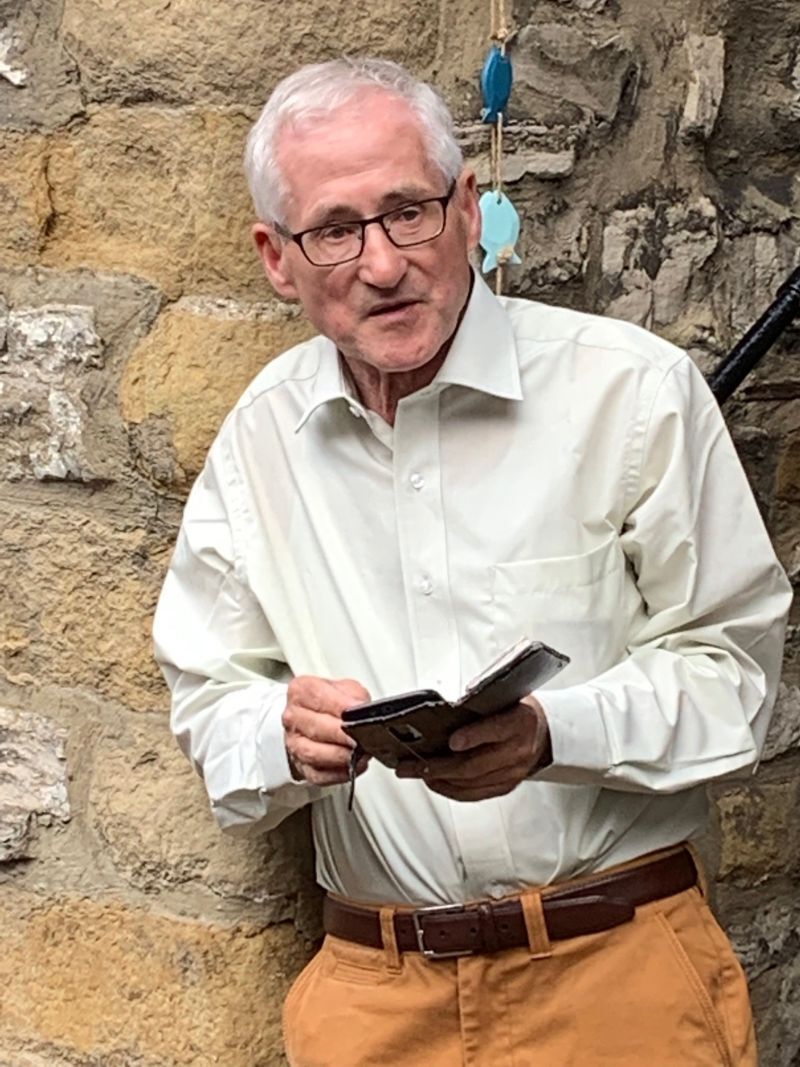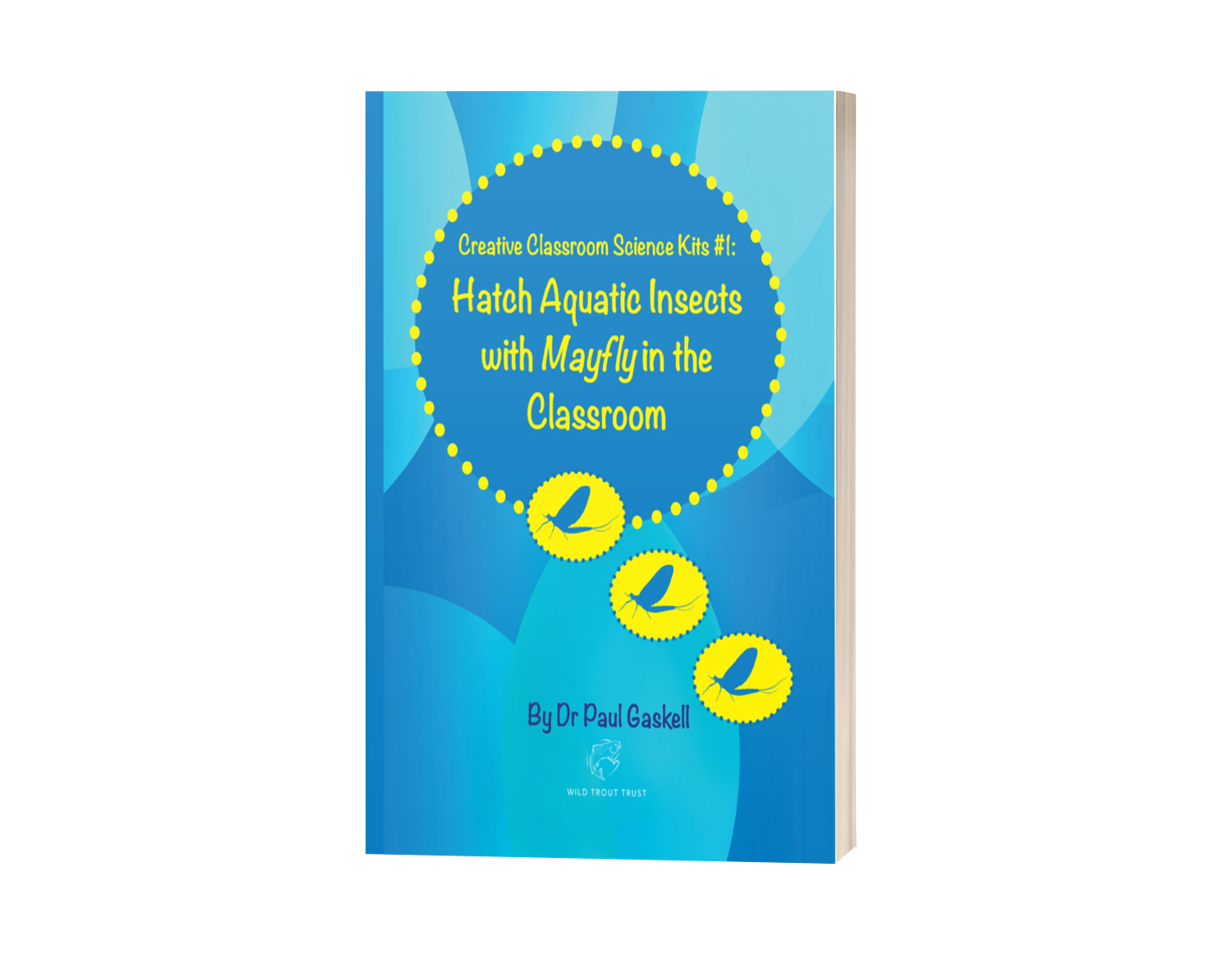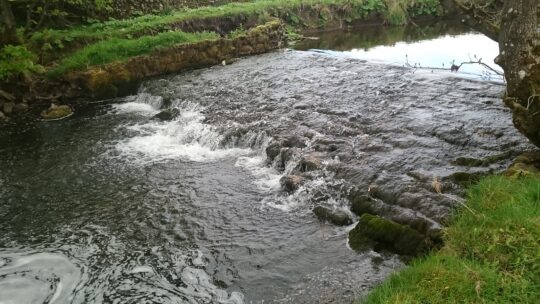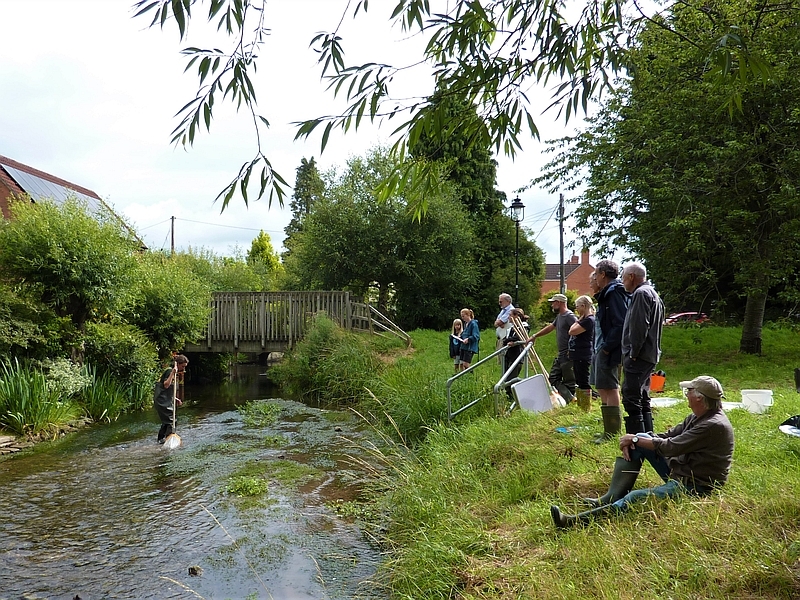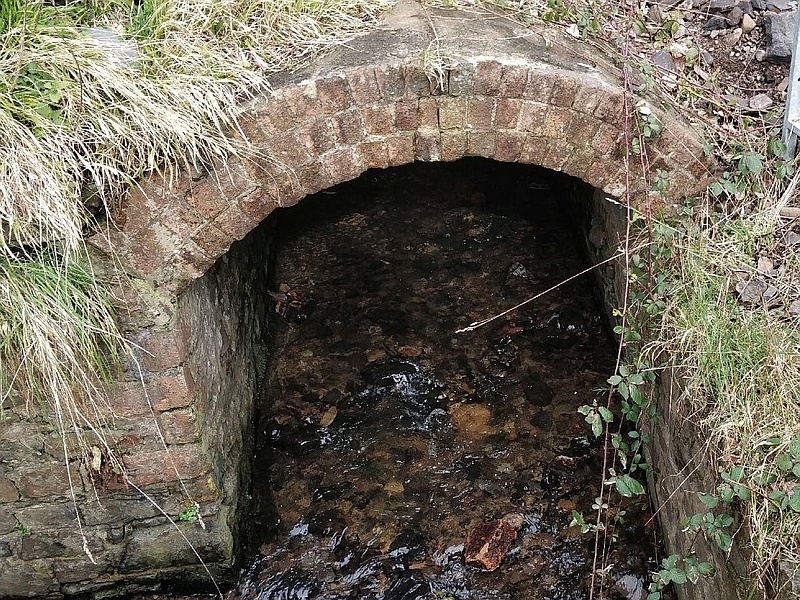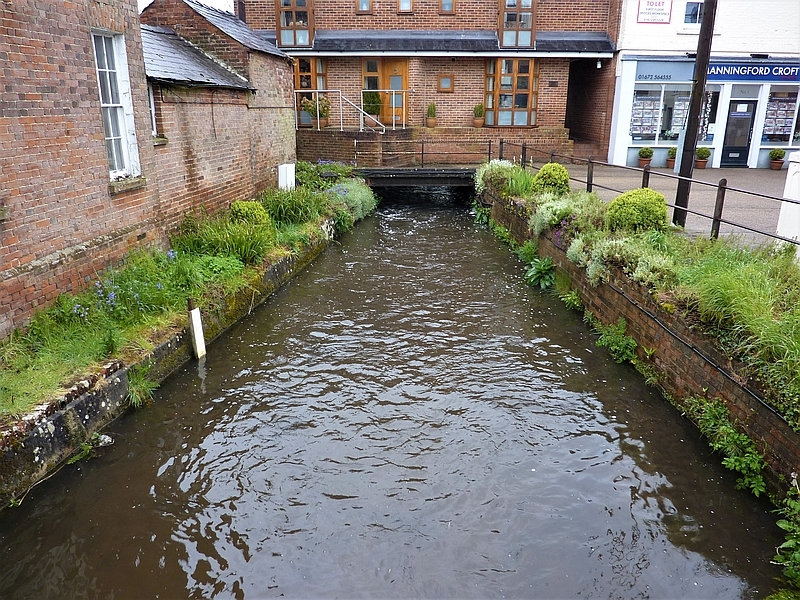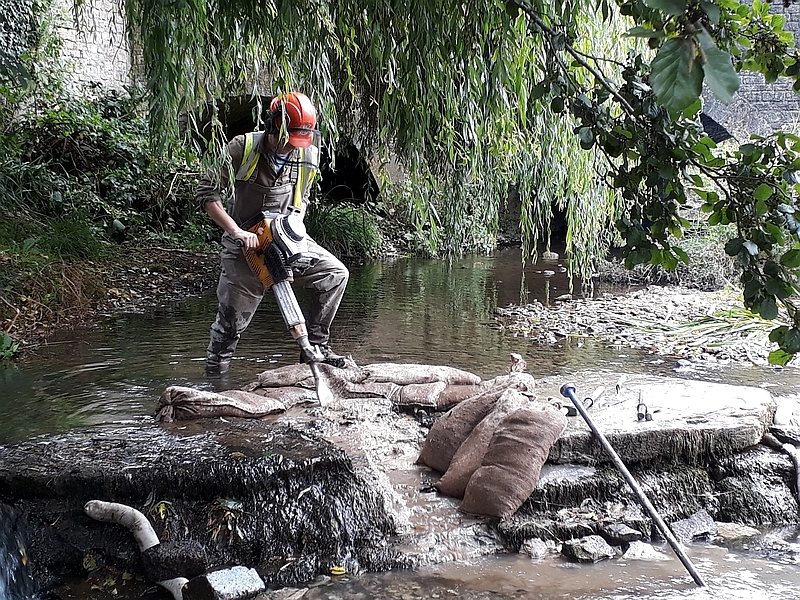Twenty-five years ago, I walked the Pennine Way parallel to the River Aire and stopped below Newfield Bridge for lunch. I imagine my casting arm was twitching slightly at the sight of the limestone stream with its clear water, mossy stones, and marsh marigold fringe. The white-water cascading over the weir was framed neatly through the arch of the road bridge, picturesque yes, but certainly not natural….
Almost 20 years later and I returned to that very spot with local EA Fisheries Officer, Pete Turner. I’d not long arrived in Yorkshire with my WTT cap on, and he was giving me a whistle stop tour and introduction to the Upper Aire Project (more of which, later). I looked at it then objectively with my fish passage polaroids on. We both agreed it was one for the wish list of removals....
